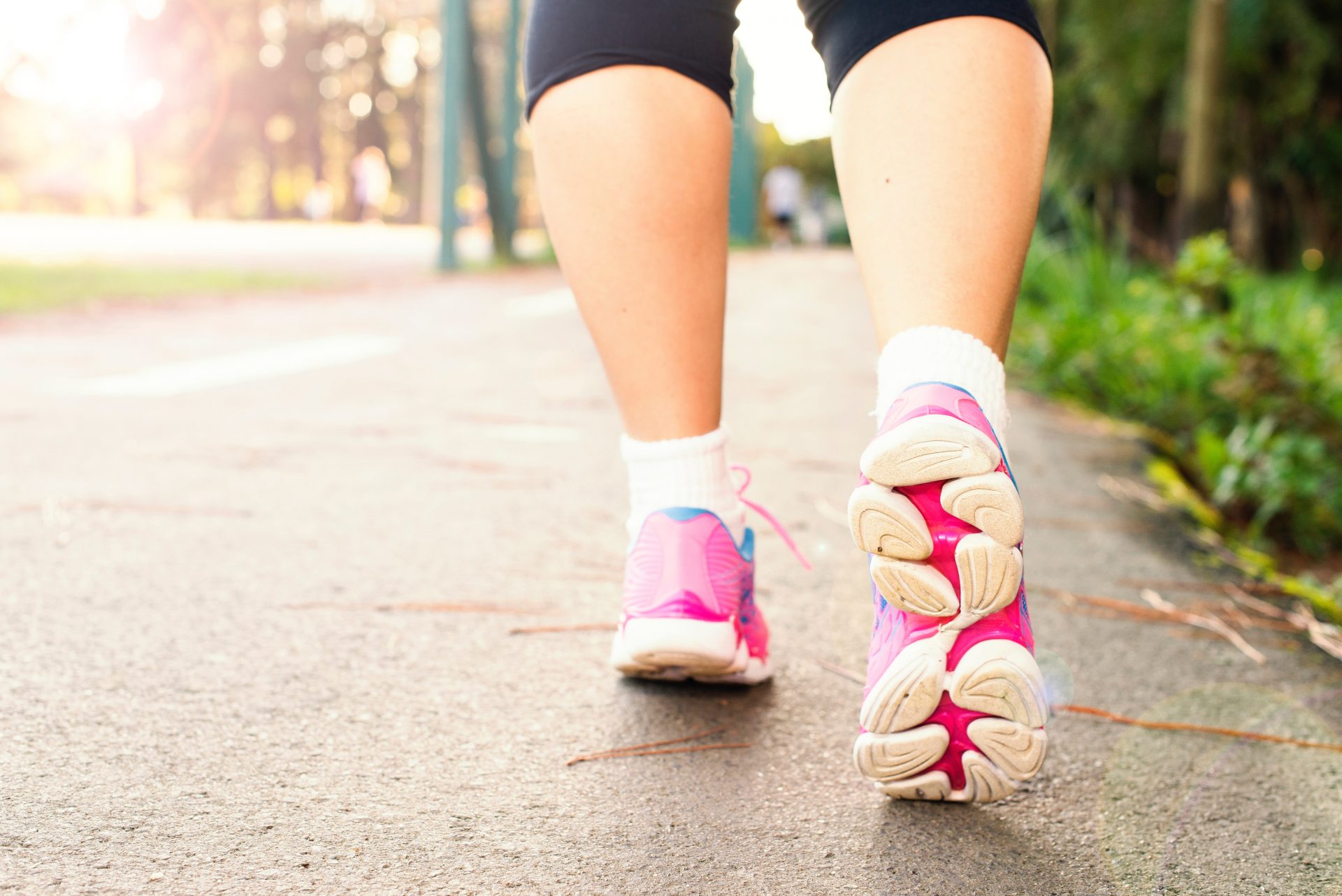What is Achilles tendinopathy?
The Achilles tendon is located at the back of the ankle and is made of strong fibres that connect your calf muscles (gastrocnemius and soleus) to your heel bone (calcaneus).
It gives you the ability to push off from the ground during walking and running.
Achilles tendinopathy is the breakdown of these fibres and can occur either where it attaches to the heel bone or roughly 5-10cm above this.
It is generally a result of repetitive over-use of the Achilles tendon, causing it to gradually become swollen, painful and stiff.
What are the symptoms?
Achilles tendinopathy is characterised by:
- Gradual onset of pain and stiffness at the back of the heel
- Loss of strength in the calf on the affected side
- It may be red, warm, swollen and painful to touch the Achilles tendon
- Difficulty walking
- Occasionally a creaky or crunching (crepitus) sound when you move the tendon
- Pain is often worse first thing in the morning and at the start of exercise but gets better as you get moving
- It is often sore post exercise
How is it treated?
Generally, Achilles tendinopathy does not get better on its own and often requires physiotherapy to treat and gradually reload the tendon, so you can safely return to sport.
Rest will help settle the symptoms initially, however once you return to the aggravating activity without appropriate rehab, the pain will flare-up again.
If you don’t get appropriate treatment and return to sport to soon, this can advance the pathology and prolong the healing process.
Physiotherapists provide a progressive tendon-strengthening program to help restore the tendons functional capacity and prevent further injury by addressing what caused the tendinopathy in the first place.
Stage one: pain reduction and address contributing factors
As with most soft tissue injuries, the initial phase of treatment is pain and swelling reduction.
Rest from the aggravating activity is important, as it allows the tendon to settle and reduces pain.
Ice and taping to offload the painful muscles and tendon may also help with pain reduction.
In this stage stretching should be avoided as it applies further strain to an already aggravated tendon.
Foam-rolling and massage are a safe way to release the muscle without flaring it up.
Your physiotherapist will also provide other manual therapy techniques such as massage or dry needling to help settle pain and prepare the tissue for reloading. It is also important to consider what may have caused the tendinopathy in the first place.
Factors that often contribute to Achilles tendinopathy include:
- Inappropriate foot wear or changes in footwear
- Changes in or poor training programs and training technique
- Reduced efficiency of the stretch shortening cycle (we will explain this further later)
- Flat (pronated) feet
- High foot arches
- Tight calf muscles
Stage two: progressive loading
Your physiotherapist will provide you with a structured exercise program to progressively strengthen and reload the tendon.
It is important to get the balance between exercise and rest right when treating tendinopathy and your physio will help you to achieve this.
A small amount of pain is expected when exercising during rehab to allow for adaptation.
However, excessive pain can result in aggravation and may be detrimental.
The scale below indicates what levels of pain are safe to work through during tendon loading.
In this stage compliance to exercise is very important.
You should begin with an isometric calf hold and progress through eccentric and concentric exercises as the tendon is able to tolerate more load.
Stage three: plyometrics
The last important stage of Achilles tendinopathy rehab is improving the plyometric function of the tendon.
Plyometric function is a tendon’s ability to store and release energy via the stretch shortening cycle.
Regardless of your sport you rely on the stretch shortening cycle to move and produce power and speed.
Despite this, many athletes don’t understand the importance of this stage of exercise before returning to sport post injury.
Understanding the stretch shortening cycle is easier if you consider the leg as a spring.
When you run your muscles stretch causing the elastic properties in the muscle to store energy, much like a spring expanding.
When this stored energy is released it causes the muscle, like a spring would, to bounce back to its original shape and propel the body forward.
This process repeats over and over as you walk, run and jump forming the stretch shortening cycle.
When a tendon is injured, such as Achilles tendinopathy, the efficiency of the stretch shortening cycle is impaired.
Therefore, it is very important to ensure the tendon has regained full plyometric function before returning to sport, especially in running and jumping sports.
With this knowledge your physiotherapist will progress your exercise program to include sport specific plyometric exercises such as hopping, bounding, and jumping.
This will ensure your Achilles tendon is able to tolerate repeated high load tasks when you return to sport.

